new posts in all blogs
Viewing: Blog Posts Tagged with: 2015, Most Recent at Top [Help]
Results 26 - 50 of 420
How to use this Page
You are viewing the most recent posts tagged with the words: 2015 in the JacketFlap blog reader. What is a tag? Think of a tag as a keyword or category label. Tags can both help you find posts on JacketFlap.com as well as provide an easy way for you to "remember" and classify posts for later recall. Try adding a tag yourself by clicking "Add a tag" below a post's header. Scroll down through the list of Recent Posts in the left column and click on a post title that sounds interesting. You can view all posts from a specific blog by clicking the Blog name in the right column, or you can click a 'More Posts from this Blog' link in any individual post.
The Adventures of Miss Petitfour. Anne Michaels. 2015. [November 2015] Tundra. 144 pages. [Source: Library]
First sentence: Very soon you will be meeting Miss Petitfour, and so, just to be sure you'll recognize her, this is what she looks like.
I loved this one from the very first page. Even before I turned the page to see that lovely phrase, "...and her Cats." Love isn't strong enough really. Let's make it LOVE, LOVE, LOVE. Miss Petitfour is a gush-worthy read if ever there was one!
So what is it about? The adventures that Miss Petitfour has with her sixteen cats. They get around town by flying--sailing in the wind using a tablecloth. What kind of adventures do they have? Are they big or small?And some adventures are just the right size--fitting into a single, magical day. And these are the sort of adventures Miss Petitfour had.
There are five adventures in all:
- Miss Petitfour and the Rattling Spoon
- Miss Petitfour and the Jumble
- Miss Petitfour and the Penny Black
- Miss Petitfour and the birthday Cheddar
- Miss Petitfour and the "Oom"
The writing is absolutely lovely, charming, delightful, and practically perfect. Do you know what a digression is? Well, of course you do. A digression is like quicksand or a whirlpool--sometimes you just can't find your way out of one. It's the part of a story that some people think is the most fun, when the story wanders off the point and gets lost, giving us all sorts of information that has nothing to do with getting us from the beginning to the end. A digression is just like what happens when you're walking to school: you stop to tie your shoelaces and notice the neighbor's dog looking at you, and so you stop to give it a pat, and then you see the fence has started to fall down, and so you have to climb it just a little, and then you look up and realize the clouds are in the shape of pianos, and then, oh dear, you suddenly remember you were on your way to school and you have to run all the rest of the way so you won't be late. That is a digression. Now, where were we?
An eccentricity is something everyone has--but everyone has a different one. An eccentricity is a quirky thing we like to do just because. Perhaps you always like to put on your right shoe first. Or perhaps you like to count by twos when you're bored. Or perhaps you only like to eat popcorn on Tuesdays. Or perhaps you like to count digressions and keep a record of them at the back of every book you read.
I enjoyed getting to know the characters. I loved Miss Petitfour, of course. But I also enjoyed all sixteen of her cats. Though probably Minky and Sizzles were my favorite. Other characters--human characters--that I enjoyed include: Mrs. Collarwaller (the bookseller), Mrs. Carruther (the grocery shop owner) and Mr. Coneybeare (confetti shop owner).
I also loved, loved, loved the illustrations. They were cute, sweet, charming, and absolutely perfect.
This is a book I see myself reading and rereading again and again and again. © 2016 Becky Laney of
Becky's Book Reviews
The Dorito Effect: The Surprising New Truth About Food and Flavor. Mark Schatzker. 2015. Simon & Schuster. 272 pages. [Source: Library]
The Dorito Effect: The Surprising New Truth About Food and Flavor by Mark Schatzker is a gush-worthy book. It is. I loved, loved, loved, LOVED it. It is packed with information; it is fascinating--crammed full of 'I didn't-know-that-facts; it is compelling--a real page-turner! And it had me hooked from the very start.
In the early autumn of 1961, a thirty-seven-year-old housewife and mother named Jean Nidetch was pushing a shopping cart through a Long Island supermarket when she bumped into a woman she knew. "You look so marvelous," her friend said, and for a sweet moment Nidetch basked in the compliment. Unfortunately, her friend kept talking. "When are you due?" Nidetch was not pregnant. At the time, she stood five seven and weighed 214 pounds, which marked her, in today's parlance, as obese, although Nidetch didn't known what that word meant, or that the obese were, at that very moment, coalescing into a demographic ripple that was on its way to becoming a wave.
The Dorito Effect is in effect a book about many things:
- the history of food (manufactured, processed, taken-to-market food), or, the business of getting food on the supermarket shelves; in part it is focused on 'junk food' but only in part. Chicken is not junk food--necessarily--but he spends a lot of time talking about CHICKEN.
- the history of diets (the book opens with the founding of Weight Watchers by Jean Nidetch), or, let the numbers shock you--they speak for themselves really. Did you know that 69% of Americans are obese or overweight?
- the history of a society/culture obsessed with food
- the argument that food is without a doubt losing its flavor, an examination of WHY food is losing its flavor (Here is where he talks a lot about chickens, also, things like tomatoes and strawberries.) This is the section where he talks about farming and ranching--agriculture--how things have changed in the past seventy-five years or so. IN other words, what we've DONE to our food.
- the flavor-making business, how 'natural' and 'artificial' flavors have evolved in the past hundred years; how almost everything seems to have flavor added to it before it's placed on the shelves; what this manufactured flavor might be doing to our bodies and minds.
- The scientific process behind it all: nutrition, flavor, behavior, etc. In other words: why we crave what we crave, why we eat what we eat, why we behave the way we do, why we can both 'want' to be thin and to eat as much as we want. Why we are so quick to blame just 'one' thing for 'making' us fat.
- Why does food taste good in the first place?! (You'll learn all about plant secondary compounds!)
- Why are some people ADDICTED to food and others are not? Why are certain foods delicious but unsatisfying?
- His premise: THE LONGER WE IGNORE FLAVOR, THE LONGER WE ARE BOUND TO BE VICTIMS OF IT. (17) Or, THE FOOD PROBLEM IS A FLAVOR PROBLEM. (157)
- the search for the ultimate, best-tasting, natural food (chicken, tomatoes, etc.) a search for a solution to a big, big problem
The Dorito Effect, however, is not about:
- other factors that lead to obesity or may lead to obesity
- practical steps you can take to become thinner and healthier
- in other words, the book, is NOT a diet book; there is no weight loss or exercise plan
Thought-provoking quotes--or a small sampling of quotes that I wanted to read aloud to anyone I could corner--
In the early '60s, well over half of Americans were "slender" and of the nonslender, the vast majority was classified as "overweight"--they needed to lose a few pounds. It is now abnormal to be slender. Today, less than a third of Americans are slender, which is another way of saying more than two-thirds are either overweight or obese. (7)
A thing, of course, is different from a flavor. Different things have their own different flavors. Oranges taste like oranges. Bananas taste like bananas. Tacos taste like tacos, and corn chips taste like corn chips. That, at least, is how the world worked back when there were still families who'd never heard of McDonald's. (13)
The Dorito didn't just predict the future of tortilla chips. It didn't just predict the future of snack food either. It predicted the future of all food. Nothing tastes like what it is anymore. Everything tastes like what we want it to taste like. As food gets blander, we crank out zestiness by the hundreds of tons to make up for it. Most people recognize this as junk food. But it's happening to food served at restaurants and the food people buy at the supermarket and cook, from scratch, at home. It's happening to blueberries, chicken breast, broccoli, and lettuce, even fennel. Everything is getting blander and simultaneously more seasoned. Everything is becoming like a Dorito. The birth of Doritos was a watershed moment. Flavor wasn't up to Mother Nature anymore. Now it was in the hands of the folks in marketing. (15)
Eating has as much to do with nutrients as sex does with procreation...We think in flavor, we dream about flavor, and we get up out of our chair when the bases are loaded in the bottom of the ninth to get it. We eat for one reason: because we love the way food tastes. Flavor is the original craving. (16)
The Dorito Effect, very simply, is what happens when food gets blander and flavor technology gets better. This book is about how and why that took place. It's also about the consequences, which include obesity and metabolic disturbance along with a cultural love-hate obsession with food. This book argues that we need to begin understanding food through the same lens by which it is experienced: how it tastes. (17)
We have taken a system designed to bring our bodies to a state of nutritional completion and turned it against us (17)
Food has changed. The change has been documented scientifically. And it is a story best told by chicken, which has become not only our number one source of animal protein but is simultaneously the blandest and most flavored--the most Dorito-like--meat. (20)
We eat gigantic babies. As a paper in the journal Poultry Science puts it, if humans grew as fast as broilers, "a 3 kg (6.6 lb) newborn baby would weigh 300 kg (660 lb) after 2 months." (26)
Modern food may be the most compelling lie humans have ever told. (40)
One after another, humans have captured the chemicals that characterize foods like apples, cherries, carrots, and beef and moved their production from plants and animals to factories. In 1965, there were less than 700 of these chemicals. Today, there are more than 2,200. (50)
Whether it says so on the label or not--and it usually does not--McCormick is in every aisle and on every shelf of the supermarket. (54)
The word "natural," in fact, has nothing to do with the end product. It simply refers to the process that gets you there. (59)
Eating is a behavior driven by an expectation of pleasure. And the mental vocabulary of those desires is not salt, sugar, or any other class of nutrients. We crave flavors. Flavors are what make food seem like food. (76)
The Dorito Effect was inevitable. It took ten thousand years, but we eventually nailed "taco." We finally figured out how to make ourselves wondrously fat. It was just a matter of technology. (81)
The rise in obesity is the predictable result of the rise in manufactured deliciousness. Everything we add to food just makes us want it more. And no matter how hard we try, we can't make our outsized desires go away. If anything, we're lucky, inexplicably so, that only 8.3 percent of women and 4.4 percent of men have a BMI consistent with total food addiction. But remember the children...The percentage of slender Americans will gradually work its way down to zero. (82)
Flavor is information. (94)
To a parasitic wasp, cis-3-hexenol means, "The caterpillar is over here," to a plant it means, "We are under attack," and to a human it is a crucial note in the label for "strawberry." (107)
Flavor factories churn out chemical desire. We spray, squirt, and inject hundreds of millions of pounds of those chemicals on food every year, and then we find ourselves surprised and alarmed that people keep eating. We have become so talented at soaking our food in fakeness that the leading cause of preventable death--smoking--bears a troubling resemblance to the second leading cause of preventable death--obesity.(127)
Flavor's effects do not end at the mouth and nose. They have only just began. There are taste receptors all through the digestive tract exactly like the ones in your mouth. Smell receptors are sensing down there. The digestive tract is not some blind extractor of nutrients. It has sensors the mouth and nose lack--fat sensors, protein sensors, bacteria sensors, hormone sensors, even plant-compound sensors. The gut is its own chemical-sensing gourmand, tasting each bite and adjusting its processes accordingly. You don't taste what your gut tastes, but it does affect your feelings. (150)
© 2016 Becky Laney of
Becky's Book Reviews
Finding Winnie: The True Story of the World's Most Famous Bear. Lindsay Mattick. Illustrated by Sophie Blackall. 2015. Little, Brown. 56 pages. [Source: Library]
First sentence: "Could you tell me a story?" asked Cole.
Premise/plot: Cole, the author's young son, asks for a story--a TRUE story; he wants a true story about a BEAR. What the author shares with her son--in the story--and with readers--in the book--is indeed a true story. The story of how a young soldier on his way to war--the author's great-great grandfather finds a bear at a train station, buys it, and takes it with him. The bear's name is WINNIE. And when Harry Colebourn goes to the front, he leaves Winnie in the London Zoo. Many people loved going to see Winnie, but, the best known perhaps is A.A. Milne's young son.
My thoughts: I love several things about this one. I love the personal connection. The author is sharing her own family history with readers. Older readers may enjoy looking at the album at the back of the book. Many photos and captions are included. This grounds the book very well as being a TRUE story. It brings the story to life.
But I also enjoy the framework of this one. It is a book that celebrates storytelling and families. I believe it is a bedtime story he's asking for. I love the idea of parents sharing their own stories with children, and true stories at that! Throughout the story, readers hear the mother and son chatting. It works.
I also just genuinely love the writing of this one!
Text: 5 out of 5
Illustrations: 5 out of 5
Total: 10 out of 10
© 2016 Becky Laney of
Becky's Book Reviews
Last Stop on Market Street. Matt de la Pena. Illustrated by Christian Robinson. 2015. 32 pages. [Source: Library]
First sentence: CJ pushed through the church doors, skipped down the steps. The outside air smelled like freedom, but it also smelled like rain, which freckled CJ's shirt and dripped down his nose.
Premise: CJ and his Nana enjoy a bus ride after church; readers are led to believe that this is a frequent occurrence for the pair. But what is the last stop on Market Street?! That mystery is not revealed immediately. Readers instead are part of the journey page by page. CJ's conversation with Nana reveals a worldview of sorts that is admirable in every way.
My thoughts: How I wish I'd read this one BEFORE it won the Newbery! It also earned a Caldecott Honor. Both are deserved, in my opinion. But one is more surprising than the other, of course. Not many picture books get the Newbery medal. This isn't the first, and, it probably won't be the last. But still--it's rare.
Why do I wish I'd read it before the big announcement? Well. Once a book wins the Newbery, it seems my expectations go over-the-top. I'm "robbed" of reading the book on its own merits without the burden of comparing and contrasting it with every other Newbery winner I've read. It's not that I intentionally set out to do so. No, it's something I try to refrain from doing when I notice it. But expectations can be sneaky.
So what do I think of this one? Well, at the very, very least I really like it. I can honestly say that I love, love, love the character of Nana! Nana and CJ are a cute pair, and, the dialogue between the two which takes up almost all of the book is well worth reading several times. The first time through you might be caught up in plot to notice the little things, the tiny things, the small elements that when seen as a whole are lovely and delightful. Such as the opening description.
Text: 4 out of 5
Illustrations: 4 out of 5
Total: 8 out of 10
© 2016 Becky Laney of
Becky's Book Reviews
Megan's Brood. Roy Burdine. 2015. 105 pages. [Source: Review copy]
I enjoyed reading Roy Burdine's Megan's Brood. It was a quick read.
Megan, the heroine, has just moved to a new town, a new house, with her family. Is she happy? No, she is not! This soon to be seventh-grader has some angst in her life. And though a bit moody, she's not outrageously, obnoxiously so. Yes, she would rather spend time in the attic--the room she chooses to be her new bedroom--than with her parents downstairs. But that very well could be because her attic is not your typical attic. There isn't a secret door leading to another world, mind you. But she did discover a cocoon with ten or so eggs in it--and these creatures, her "brood," are magical. Though they're not born with fully developed magical powers. Megan balances her time between caring for "her brood" and spending time with the two boys she's met since moving. Cutter is "the cool friend" who skates and parties. Casper is the super-polite bookworm. The three are not friends, but, she is friends with each boy. Though her "brood" takes more and more of her time as the summer progresses.
Is Megan's Brood action-packed? I wouldn't say that it is. The entire book reads like a prologue. That isn't a bad thing, mind you, fantasy books need prologues and a proper setting up. And by the end, readers get a strong hint that future books will have more action and/or adventure.
© 2016 Becky Laney of
Becky's Book Reviews
A Pig, A Fox, and a Box. Jonathan Fenske. 2015. Penguin. 32 pages. [Source: Library]
Did I enjoy reading A Pig, A Fox, and a Box? Yes and no. No, in that I'm not the intended audience for it, and, it wasn't quite my type of book. I didn't really "like" the illustrations. Yes, in that it was a good, solid book for young readers.
Readers meet two characters: Fox and Pig. Readers quickly see that Fox is tricksy. He is a kidder, a joker. He really, really WANTS to fool his friend, Pig. Time and time again, the joke is on FOX and not Pig after all. So it was FUN in a way.
Here's how it begins: "I am Fox. I am Pig. I am little. I am big. I have a box. I like to play. I think I will trick Pig today."
© 2016 Becky Laney of
Becky's Book Reviews
My Name is Mahtob. Mahtob Moody. 2015. Thomas Nelson. 352 pages. [Source: Library]
I read Not Without My Daughter over twenty years ago. It was one of my 'discoveries' as I was shelf-reading the shelves in my high school library. (Not even nonfiction was safe to assign me! I was prone to getting distracted.) At the time I didn't read a lot of nonfiction, and, I certainly didn't associate nonfiction with "compelling" and "fascinating." But it was a quick read that I remember really getting absorbed in. That being said, do I remember many details?! Of course not! And I don't think that's necessarily a bad thing. It allowed me to pick up My Name is Mahtob with fresh eyes. There was no need to compare and contrast accounts or memories. And as soon as the author said that she had never read her mother's book, I felt a bit relieved if I'm honest.
So how much of the book is focused on her time in Iran? Just a chapter or two. Maybe slightly more. Her experiences certainly shaped her life in one way or another. But perhaps not in the way one would expect. Once back in the United States, her mother wrote a book, her mother went on tour with the book, did book signings, gave lectures, traveled not just around the country, but, to other parts of the world, there was a movie deal, etc. Sometimes Mahtob stayed in school and had a "normal" life though perhaps it's not normal to attend elementary school with a false name--a new name. But she certainly did a fair amount of traveling with her mother, and was a person of interest to the media. Through it all, through several decades, the two lived in fear that her father would retaliate. That more drama would find them. Would her father try to find them? Would Mahtob be kidnapped?
The book focuses on her growing up years--her school-age years, from kindergarten through college, I'd say. A few chapters follow about her adult years--home/family life, working, dating/socializing, etc.
The book focuses on a handful of big things: the effect of her childhood trauma (for lack of a better word), her health problems growing up with Lupus, her vigilance to stay safe and yet deal with the past in a healthy way, and how her Christian faith has shaped/defined her.
Is the book "too" Christian? I think honesty is best. It is published by Christian publishing house. There is no denying that. And the author is a Christian--defines herself as being Christian. Her faith matters to her. And she speaks openly and honestly about being a person of faith, of being a Christian. While unashamedly saying that she *is* a Christian, she stresses the importance of freedom of religion and freedom of speech. How every single person should have the freedom to believe or not believe whatever they want, to worship or not worship as they personally see fit, to make their own choices about how to live, what is right for them. So, yes, she mentions Jesus.
Other reviews I've seen complain about the "Christian" content. That somehow because she mentions God in the pages of her life, in her life story, that the book loses appeal, and, potentially readers. This makes no sense to me.
She certainly didn't ask for fame. And her life might have been different if they'd never gone to Iran to visit her father's side of the family. But this is a memoir, and it should reflect a whole life, a whole person. If there is a message in the book, it is, I think that one person can make a difference, that every individual matters, that choosing forgiveness means choosing joy.
I found this one a compelling read. I am going to try to reread Not Without My Daughter soon. © 2016 Becky Laney of
Becky's Book Reviews
Moo Bird. David Milgrim. 2015. Scholastic. 32 pages. [Review copy]
Looking for a silly book to read and share with little ones? Or perhaps you're looking for a funny book for your young reader to read to you? Moo Bird by David Milgrim is definitely worth considering.
In the book, readers meet a bird who is a little different. Instead of saying "tweet, tweet, tweet" like his brothers and/or sisters, this little bird chooses to MOO. The bird, initially, meets with a lot of rejection. First from his own nest. Then from other farm animals the bird meets as he searches for cows. He's rejected by a pig, a horse, a sheep, and ultimately a cow. But someone has heard his "moo" and responds gleefully. It seems he will find a friend at last....
I like this one. Perhaps I don't love, love, love it. But it makes me smile. Every time it makes me smile. So that has to say there is something about this one that makes it worth reading, right?
© 2016 Becky Laney of
Becky's Book Reviews
Voice of Freedom Fannie Lou Hamer. Carole Boston Weatherford. Illustrated by Ekua Holmes. 2015. Candlewick. 56 pages. [Source: Library]
Voice of Freedom: Fannie Lou Hamer: The Spirit of the Civil Rights Movement is a book both easy to categorize and difficult. It is nonfiction. It is a biography of Fannie Lou Hamer--a picture book biography. A biography written in verse. So it's poetry too. And it's about the civil rights movement. Yes, the focus is on Fannie Lou Hamer's role in the civil rights movement, but, it isn't as if it's her story alone. It is so much more than that. The fact that it is a picture book biography written in verse about the civil rights movement makes it a great example of a picture book for older readers. (And the fact that it's about the civil rights movement, and, a heroine of the movement, makes it a great example of a diverse title and one highlighting a remarkable woman.) So there are at least half a dozen reasons why one would want to pick this one up and read it.
But could I be forgetting the most important reason to seek this one out to read?! It is a GREAT read. It was fascinating, absorbing, compelling. I've read a dozen or so books--mainly for young readers, I admit--about the civil rights movement, yet I still found myself learning things I hadn't known before. I love to learn as a I read. And it is so beautifully written, the narrative voice is just outstanding. A typical spread includes one poem and an illustration by Ekua Holmes.
Would I recommend it??? YES!
© 2016 Becky Laney of
Becky's Book Reviews
Waiting. Kevin Henkes. 2015. HarperCollins. 32 pages. [Source: Library]
First sentence: There were five of them. And they were waiting....
Premise/plot: A collection of toys sit on a window sill and wait. Most toys are waiting for something specific, but, not all. Some just like looking out the window at anything and everything. There is some sense of companionship among the toys, but, I wouldn't necessarily call this one friendship-themed.
My thoughts: Unique, yes, I think it is. Simple too. But at times, I found it charming and sweet. This is sometimes conveyed by the text of the story. One of my favorite lines is, "When it finally snowed, the puppy was happy. He'd waited a very long time." But I'd say that most of the charm is conveyed by the illustrations. (Both text and illustrations are by Kevin Henkes.) One of my favorite scenes is when the toys are all shown "sleeping" on the sill. And in another scene, the toys are shown huddled together--afraid--because of the storm outside. It is more expressive than you might at first think.
I'd recommend it easily to anyone who enjoys Henkes' work. Is it my personal favorite by him? I'd say no. It is not an action-packed, make-you-laugh-out-loud book to share with children. It is a quieter, subtler read instead. Nice doesn't have to be a bad thing in terms of describing a book.
Text: 4 out of 5
Illustrations: 4 out of 5
Total: 8 out of 10
© 2016 Becky Laney of
Becky's Book Reviews
The Odds of Getting Even. Sheila Turnage. 2015. 352 pages. [Source: Library]
I definitely am a fan of the Tupelo Landing middle grade mystery series by Sheila Turnage. It isn't so much the plots that I love, love, love. At best, I really like them. At worst, I just "like" them. Instead, it is the characters, the narration, the dialogue, the setting that I love, love, love. Turnage has created a whole community for readers to connect with, to love. And it is the whole community--carried over from book to book to book--that has me hooked on the series.
Mo Lobeau (the heroine) has a detective agency with two of her good friends, Dale, and Harm. They've solved a case (or two) in each book. And their work has consequences, as, readers learn in this one. The book seems to be more about the aftermath of previous cases in a way. But they are definitely ACTIVE in this book. Crimes are plentiful in town. And these sixth graders are just as active as the police detective in trying to solve them...
Would recommend the series. But be sure to read in order! This one, I think, wouldn't do as a stand-alone.
© 2016 Becky Laney of
Becky's Book Reviews
She Is Mine: A War Orphans' Incredible Journey of Survival by Stephanie Fast. 2015. Destiny Ministries. 224 pages. [Source: Review copy]
Stephanie Fast's She is Mine is a compelling, unforgettable memoir of a Korean war-orphan.
Her father, whom she never met, was an American soldier. He returned to the U.S. unaware that he was going to be a father. Her mother, ashamed and embarrassed, returned to her family. Initially beloved of her mother, the author was shunned by the rest of the family and shunned by the community in which she spent her early years. Eventually, her mother gave into the family pressure and abandoned her. The author was--at the age of four--put on a train and sent away. Told that "an uncle" would welcome her at the end of the line, the truth was she would never see her family again, never find her way back "home."
She had the clothes on her back, and, a day's worth of food. But how can a four-year-old survive on her own? But survive she did. The book chronicles the years--three or four years, I believe--she spent surviving, leading an uncertain, always desperate existence. Sometimes wandering in the country, in the fields; sometimes wandering into villages and cities. Usually her encounters with other people were negative. It went beyond her early-years experience of name-calling and "shunning." She was beaten. She was tortured. She was left to die. And yet. There were a few people who treated her kindly, with grace, who emphatically declared you must survive.
The memoir goes to really dark, really ugly places. I won't lie. Some of what she endured is horrifying and the fact that she was able to survive is a miracle.
She is Mine is ABOUT adoption, about the need for adoption, about how life-changing and amazing adoption can be. It's about adoption-as-redemption and redemption-as-adoption.
For anyone who enjoys nonfiction, this one is a must read.
© 2016 Becky Laney of
Becky's Book Reviews

By:
Becky Laney,
on 2/16/2016
Blog:
Becky's Book Reviews
(
Login to Add to MyJacketFlap)
JacketFlap tags:
coming of age,
J Fiction,
J Fantasy,
Penguin,
MG Fiction,
library book,
MG Fantasy,
2015,
books reviewed in 2016,
Add a tag
Confessions of an Imaginary Friend. Michelle Cuevas. 2015. Penguin. 176 pages. [Source: Library]
Did I enjoy Michelle Cuevas' Confessions of An Imaginary Friend? Yes, for the most part. It is narrated by an imaginary friend who, at first, has no idea that he is imaginary. His name is Jacques Papier.
So the book is a "coming of age" story for an imaginary friend. If he's not "real" if he's the product of someone's very active imagination, then does he "really" exist at all. If he's not real, what is he, if anything? Can he stop being *her* imaginary friend, and, become someone himself? What does freedom for an imaginary friend look like? And what happens to imaginary friends when the child that imagines them grows up? Where do they go? What do they do? Do they cease to exist? Or are they in some way reborn? We get answers to most of these questions at least. And we meet some interesting people...some real...some imaginary like our hero.
The book, as a whole, reminded me of The Miraculous Journey of Edward Tulane. And I mean that in the best way possible; I know not everyone is a fan of Edward Tulane.
I liked it. I did. I definitely liked it. I'm not sure at this point if it's love, LOVE. But it was cute.
© 2016 Becky Laney of
Becky's Book Reviews

By:
Becky Laney,
on 2/15/2016
Blog:
Becky's Book Reviews
(
Login to Add to MyJacketFlap)
JacketFlap tags:
J Fiction,
J Fantasy,
Scholastic,
Newbery Honor,
MG Fiction,
library book,
MG Fantasy,
mg historical,
j historical,
2015,
books reviewed in 2016,
Add a tag
Echo. Pam Munoz Ryan. 2015. Scholastic. 592 pages. [Source: Library]
Did I enjoy reading Echo by Pam Muñoz Ryan? Yes. I found it both unique and compelling. Echo is unique in that it has three-in-one feel to it. Essentially Echo being three middle-grade novels in one. The three are held together by a fairy-tale-esque frame of a story, and, also a physical object: an harmonica. The framework of the story would lead me to think of it as "fantasy" or magical realism. But without that framework--which consists of just a few pages at the beginning and the end--the book IS historical fiction. Nothing happens within the three stories that couldn't--wouldn't--happen in the real world.
The book has three main characters. Friedrich living in Nazi Germany in the early 1930s; Mike living in Pennsylvania in the mid-1930s; Ivy living in California in the early 1940s. Music is a big part of each story, and, each have played the same harmonica.
So which story did I find most compelling? That's not a fair question at all! Friedrich perhaps would be my answer. He is very gifted, but, also publicly and privately shamed because of a birthmark and the fact that he had had epilepsy as a baby/toddler. His "imperfections" may prove too costly for him and his family with Hitler now in control. That and the fact that his father--a musician--is friendly with Jews. Is he "different"? Yes. But in a good way--a BRILLIANT way. When he hears a piece of music, he really HEARS it and REMEMBERS it. And he can play and replay it in his mind, it can "continue" to sweep him away each time. And the fact that he likes to pretend to conduct the music he hears in his head, well, that makes him horribly odd to outsiders. A handful of adults really see him as something special, but, others see him as an embarrassment, a disgrace, a mistake. This story had a few heartbreaking scenes in it. Scenes with the sister, Elizabeth, for example.
The other two stories are set in America. Mike's story features him and his little brother--both orphans. Both are musically gifted which proves to be fortunate. For a wealthy woman has to adopt a musical boy into her family in order to inherit her father's money. The problem? She doesn't *want* to be reminded of heartbreak in her own past. Can Mike and Frankie thaw her heart? Ivy's story is definitely centered on World War II. Her story is slightly more complex than the other two to summarize clearly. Essentially, Ivy (and her family) are Hispanic. They have moved a LOT through Ivy's young life. But the father receives an once-in-a-lifetime opportunity. If he will manage a piece of property for another family--a Japanese-American family being forced to resettle in an internment camp--then he will be hired on as manager or kept on as manager after the war and receive a small bit of property/house. The family experiences some prejudice after the move. Ivy can't attend school with white children. But she can participate in after school activities at the main school--including orchestra.
Overall, this one worked for me. Perhaps some scenes are better--stronger--than others. It is a long novel for middle-graders. As I said, it's like three-in-one! But I essentially enjoyed it
© 2016 Becky Laney of
Becky's Book Reviews
Peppa Pig and the I Love You Game. 2015. Candlewick. 32 pages. [Source: Review copy]
First sentence: "It's Valentine's Day!" says Mummy Pig.
Premise/plot: In celebration of Valentine's Day, Peppa Pig and her family name all of the many, many, many things they love. For example, Daddy Pig loves to make pancakes and George likes dinosaurs, or dine-saw, as the case may be. Peppa may just be the most vocal in the family. She names DOZENS of things that she loves. What will top her list? Can you guess?
My thoughts: I liked it well enough. I don't really think any Valentine's-Day themed book is going to top my best of list. But Peppa Pig is cute, fun, adorable. I love, love, love the TV show. And I'm almost always glad to see new picture books being released starring Peppa and her family. Anyone who enjoys the show will find this one fun, in my opinion. However, if you've never, ever seen the show, then this picture book will probably not quite work for you. Part of the fun is HEARING the characters talk and knowing their stories and backstories.
Text: 3 out of 5
Illustrations: 3 out of 5
Total: 6 out of 10
© 2016 Becky Laney of
Becky's Book Reviews
Trombone Shorty. Troy Andrews. Illustrated by Bryan Collier. 2015. Harry N. Abrams. 40 pages. [Source: Library]
Trombone Shorty is a picture book biography of Troy "Trombone Shorty" Andrews, a jazz musician from New Orleans. It is illustrated by Bryan Collier. Perhaps I should say BEAUTIFULLY illustrated by Bryan Collier. I have a weakness for illustrations this beautiful. I do. I can't help it.
I also tend to read picture book biographies of jazz musicians. If you read a lot of picture books, you know that there are new ones every year. If you don't read a lot of picture books, well, you might just be surprised at how many picture books are biographies of musicians past and present--not just jazz musicians, but all sorts of musicians. I'm not sure why, but, I think it is perhaps because picture books lend themselves so very well to rhythm and rhyme.
So did I enjoy this picture book? Yes! Very much. I loved the illustrations, as I've mentioned. And I love the focus on mentoring and legacies and heritage. One of the points the author stresses is that musicians help younger musicians, they should help younger musicians. They can teach; they can inspire; they can provide opportunities. He was helped along from a very young age. And this picture book pays tribute to those who helped him, who influenced him, who guided him. The author's note also mentions how he is eager to do the same for a new generation of musicians.
This one is definitely easy to recommend.
© 2016 Becky Laney of
Becky's Book Reviews
Abhay Khosla is one of the most entertaining and brutal comics pundits/reviewers out there. And his The TCJ 2015 Year-in-Review Spectacufuck leaves only bloody corpses behind with a month by month look back at 2015's biggest kerfuffles, craziest squabbles, and most mindblowing snits, Like the way everyone got mad at Jill Lepore for letting her kids read comics:

By:
Becky Laney,
on 2/9/2016
Blog:
Becky's Book Reviews
(
Login to Add to MyJacketFlap)
JacketFlap tags:
J Fiction,
J Fantasy,
international literature,
children's classic,
MG Fiction,
library book,
MG Fantasy,
1954,
2015,
books reviewed in 2016,
Add a tag
Mio, My Son. Astrid Lindgren. 1954/2015. NYR Children's Collection. 184 pages. [Source: Library]
Here's how Mio, My Son begins: "Did you listen to the radio on October 15th last year? Did you hear the news about a boy who disappeared? This is what it said: 'Police in Stockholm are searching for a nine-year-old boy missing from his home, at 13 North Street, since 6.P.M. two days ago. Karl Anders Nilsson has light hair and blue eyes. At the time of his disappearance he was wearing brown shorts, a gray sweater, and a small red cap. Anyone with more information on his whereabouts should contact the police.'"
I don't even know why, but, something about that opening paragraph grabbed me. I wanted to read more. I knew nothing about the book, but I knew I wanted to make time to read it. (When was the last time you got hooked into a book?! I'd love to hear about it!)
So, you might think based on the opening paragraph that Mio, My Son was realistic fiction. That it was perhaps a bit on the dark side, and, that it would perhaps involve a kidnapping. Unless you've read reviews of it, you might not be expecting to find a FAIRY-TALE like fantasy novel set not in the 'real world' but in Farawayland. I know I was surprised--quite pleasantly--to find that Mio, My Son IS a fantasy novel.
The hero of this one is a boy sometimes called 'Andy' but usually called MIO. He is the 'missing boy.' He is narrating his own story, and doing it in his own way. The narrative voice is quite strong, in my opinion.
Now, I will warn readers that sometimes Mio repeats himself. For example, "I must go there to fight Sir Kato, though I was so scared, so scared." Some readers might find this an unforgivable sin. I don't. Not in this case at least. I didn't find it as annoying as a written stutter, for example. Perhaps because it mainly occurs when Mio is thinking about or talking about Sir Kato. It doesn't occur on every page.
So essentially, the book is Mio's adventures in Farawayland. The first half of the book is mostly light and joyous. Nothing heavy or dark. The second half of the book, however, is much more dramatic and dark. THINK Lord of the Rings only for a much younger audience. Mio has a mission to accomplish, something that only HE, as a royal son, can do. And it is seemingly impossible and very daunting. Mio must make up his mind to be brave and determined and risk everything for his mission.
Mio is not alone. He has a best friend, Pompoo, and a horse, Miramis. And, there is, of course, his father THE KING, who I personally LOVED.
So did I like this one? Did I love it? Did I love, love, LOVE it? I think I definitely loved it. I loved it for the narrative, for the descriptive language, for the imagery. I really loved the imagery of the Bread That Satisfies Hunger and the Well That Quenches Thirst. Also I really liked the Well That Whispers at Night. The first two images reminded me of Scripture. (John 4:13-14; John 6:35) The sacrificial nature of the mission also reminded me of Scripture. I'm not convinced it can only, always be read as an "allegory" (think The Lion, The Witch, and the Wardrobe). But as a Christian reader, I saw how it could be interpreted that way.
I think anyone can appreciate the imagery of the Well That Whispers At Night:A whisper began deep, deep down in the well. It was such a strange voice, unlike any other voice. It whispered fairy tales. They weren't like any other fairy tales, and they were the most beautiful stories in the whole world. There was almost nothing that I loved more than listening to fairy tales, so I lay down flat on my stomach, leaning over the edge of the well to hear more and more of the voice that whispered. Sometimes it sang too, the strangest and most beautiful songs.
"What strange kind of well is this?" I said to Totty.
"A well full of fairy tales and songs. That's all I know," said Totty. "A well full of old stories and songs that have existed in the world for a long time, but that people forgot a long time ago. It is only the Well That Whispers at Night that remembers them all."
Here's another favorite passage:
I understood then for the first time that I never needed to be afraid of my father the King, that whatever I did he would always look at me kindly, like he was doing now as he stood there with his hand on the Master Rose Gardener's shoulder and with all the white birds flying around him. And when I understood him, I was happier than I'd ever been before in my life. I was so glad that I laughed quite hard.
© 2016 Becky Laney of
Becky's Book Reviews
Roller Girl. Victoria Jamieson. 2015. 240 pages. [Source: Library]
Do I typically read graphic novels? Not really. I want to admit that from the very beginning of this review! I might average about two or three a year. And I usually just read the ones that are getting Newbery buzz or actually do get a Newbery or Newbery Honor. Roller Girl IS a graphic novel. It IS a Newbery Honor book for 2016.
Roller Girl is a coming-of-age graphic novel set mainly in the summer as the heroine, Astrid, goes to Roller Derby summer camp. Astrid is a bit angsty that her friend, Nicole, is no longer her best-best friend who wants to do every little thing with her. For example, Nicole does NOT want to go to roller derby camp, she wants to go to dance camp. She also wants to start hanging out with and dating boys. Astrid? Not really her thing--at least not yet. There is some jealousy mixed in with frustration. It isn't just that Nicole is interested in different hobbies. It is that Nicole is spending time--a lot of time--with other people. And one of those people she's now spending a LOT of time with is her nemesis, Rachel. Rachel and Astrid have some ancient history--way back in second grade, I believe?!
Astrid is confused and frustrated and moody and angry and DETERMINED. Roller derby is, by far, the hardest thing she's ever done--ever attempted. And it does not come easy. She is not a natural on skates--not by any stretch of the imagination. And it is physically, emotionally, mentally challenging to her. She WANTS it so bad that she pushes, pushes, pushes to improve. It is because she struggles that I believe she is so relatable.
I also liked how Astrid begins to make other friends outside of Nicole, and, that she is given the opportunity to find her own thing, to become her own person. True, part of that journey involves dyeing her hair BLUE. But having blue hair isn't the "worst" of her crimes--in the eyes of her mom. It is the fact that Astrid is less than honest. Still, I think the two are depicted as having a mostly-positive relationship. Which is nice to see in fiction. That Moms and daughters can get along and talk through their differences.
Astrid also finds a mentor--of sorts--in Rainbow Bite. Readers do learn a good bit about the sport of Roller Derby.
So overall, I enjoyed the characterization. I enjoyed the coming-of-age aspect of it. And despite the fact that it is a graphic novel, and, despite the fact that it is sports-focused, I did enjoy it. I read it quickly, in one setting.
© 2016 Becky Laney of
Becky's Book Reviews
Supertruck. Stephen Savage. 2015. Roaring Brook Press. 32 pages. [Source: Library]
First sentence: The city is full of brave trucks.
Premise/plot: The garbage truck is the star of this book about "brave trucks" in the city. True, you won't find him among the three brave trucks shown on the first page. The three "brave" trucks are the fire truck, the bucket truck, and the tow truck. But Garbage Truck is brave all the same even if the other trucks are unaware of his secret identity. Essentially, the book shows what happens in the city when a BIG, BIG snow storm comes through. All the super-brave trucks are STUCK, STUCK, STUCK. But one truck is a SUPERTRUCK and "saves" the city. The other trucks are clueless who this HERO is...but readers know the truth.
My thoughts: I liked it. I definitely liked it. Yes, it is very, very simple. The illustrations are simple. The text is simple. The plot is simple. But it works, it all comes together and just WORKS.
Text: 4 out of 5
Illustrations: 3 out of 5
Total: 7 out of 10
© 2016 Becky Laney of
Becky's Book Reviews
.jpg?picon=107)
By:
Lizzy Burns,
on 2/1/2016
Blog:
A Chair, A Fireplace and A Tea Cozy
(
Login to Add to MyJacketFlap)
JacketFlap tags:
reviews,
adult,
historical fiction,
mystery,
Kate Morton,
Atria,
2015,
favorite books of 2016,
Add a tag
The Lake House: A Novel by Kate Morton. Atria. 2015. Library Copy.
by Kate Morton. Atria. 2015. Library Copy.

The Plot: 1933 Cornwall. A eleven month old baby disappears from his crib during a house party at an estate. He's never found.
2003. A police detective is visiting her grandfather in Cornwall. She stumbles upon an abandoned house and hears the local story: how decades ago, a child disappeared and the family left and never came back.
A lost child, deep family secrets, the ties between mother and child, the choices made. And a mystery that was waiting to be solved, by the person willing to ask the right questions.
The Good: I loved this book so much. It had everything I love in a book.
Their are three main narrators, and two main time periods.
Alice Edevane was sixteen the summer her brother Theo was taken. The summer on the Cornish estate was as magical as any Alice had ever had at the beloved family estate, Loeanneth, and even more wonderful because its the year she falls in love for the first time and the year she decides to embrace a life as a writer, and writes her first mystery.
In 2003, Sadie Sparrow's visit to her grandfather isn't entirely voluntary. There were problems for a recent case involving a young mother who disappeared, and Sadie refused to believe the woman left her small child behind. When faced with the truth of the woman abandoning her child, Sadie made foolish mistakes and now is waiting in the country for things to get resolved in the city.
When she starts to investigate the mystery of Theo Edevane, she finds out that the home is now owned by Alice Edevane, also known as A. C. Edevane, a famous mystery writer. After the reader encounters the young, brilliant, hopeful Alice on the brink of life, they next encounter her as woman pushing ninety, succesful, but wiser about people than she was as a child.
Then there is Eleanor Edevane, mother of Alice and Theo, and her voice joins the story.
The book jumps from time to time and narrator to narrator, and this flow of story is brilliant. Morton is careful about what and when she tells the reader, but part of the reason is because each person knows only their own story and is limited to their own impressions, their own memories, their own knowledge. As a mystery, Morton deftly guided me so that I was guessing "who" or "what" or "why" just pages ahead of Sadie, so that I felt as clever or more so than Sadie. And then, with Sadie, realized when I was wrong, because I learned something new.
The Lake House is a mystery, but it's also a story of family. Of the brilliant Edevanes who at first seem like something out of a PBS Miniseries. The family had once had a grand house, and Loeanneth, grand as it seems, is the small house that is all that is left of that manor. The house is important to Eleanor and her husband, Anthony; to their children, Deborah and Alice and Clemmie and Theo; and part of the punch in the gut tragedy of the present is how the house was abandoned after Theo's disappearance.
Pull back, and it's more than a handsome couple and their beautiful children and the fairy tale estate. Fairy tale in part because the child Eleanor inspired a beloved children's book.
But no fairy tale is all sun and sunshine. As Sadie delves further into the past, as Alice reexamines her own memories and impressions, and as Eleanor steps forward and shares her story, secrets are uncovered. Because as anyone who does the math can figure, the Great War had ended just 15 years before. And what was the far away past to a sixteen year old Alice was very much part of the lives of her parents.
I don't want to give too much away, because as I said part of the joy of this book is the structure of what is revealed when and why and how. I will say this about those reveals. They aren't "aha" moments of crimes and terrible deeds. Rather, they are about perspective and knowledge. Eleanor's children see her as a certain type of mother, and their father as certain type of man, and yes -- the father is the favorite. As the story unwinds, it becomes clear that part of this is because Eleanor did what was necessary to give her children a safe, happy, childhood, at any cost. And she was so good that Alice, decades later, still didn't quite realize what her mother had done -- how her memory of a wonderful, carefree day was, to her mother, a day fraught with danger.
One of my Favorite Books of 2016. I now want to read all of Morton's books.
Amazon Affiliate. If you click from here to Amazon and buy something, I receive a percentage of the purchase price.
© Elizabeth Burns of A Chair, A Fireplace & A Tea Cozy


The Sword of Summer (Magnus Chase and the Gods of Asgard #1) Rick Riordan. 2015. Disney Hyperion. 528 pages. [Source: Library]
I haven't read any Rick Riordan in a year or two, so I was quite happy to pick up The Sword of Summer, the first book in his new series. I was hoping that it would be just what I needed: an exciting blend of action, drama, and humor. And it was. For the most part.
Magnus Chase, the hero, or almost-hero, is surrounded by a wild, diverse cast of sidekicks. Slowly but surely this team comes together in an almost-ultimate showdown between good and evil. There are plenty of tests put into place throughout the book to get the team to be a TEAM, ready to work together for the good of mankind.
Magnus Chase has just turned sixteen when the action begins. He's homeless, but, he's not friendless, and he's been warned that trouble is heading his way. Always thinking to stay a couple of steps ahead of trouble, he decides to investigate. Surely he can get close enough to trouble to see what's going on, and stay far enough away that he can slip away, right?! Wrong. But it's just what readers expect. After all, when the narrator tells you on page one that he dies, it's a sign that he actually dies...
Most of the book features Magnus in the after-life. And the focus of this fantasy series is on Norse mythology--Asgard. So there are fire giants, frost giants, wolves, and so much more...
Can Magnus and his friends prevent Doomsday from coming?
© 2016 Becky Laney of
Becky's Book Reviews
Out of Darkness by Ashley Hope Perez. Carolrhoda LAB. 2015. Printz Honor Book. Library copy.
by Ashley Hope Perez. Carolrhoda LAB. 2015. Printz Honor Book. Library copy.
 The Plot: March 1938. Wash Fuller is working, thinking of his girl, of their plans of a life together. Then the earth shakes and everything changes: the New London school has blown up, and he runs to where she may be.
The Plot: March 1938. Wash Fuller is working, thinking of his girl, of their plans of a life together. Then the earth shakes and everything changes: the New London school has blown up, and he runs to where she may be.
The book then flashes back to 1937, when Naomi moves with her two half siblings to New London in East Texas to live with her stepfather and to use his last name, Smith, discarding her own name of "Vargas" to pass (or pretend to pass) as white, not Mexican.
And she meets Wash, an African American teenager who offers friendship and love. He's not acceptable to her stepfather, because of his color -- and because her stepfather Henry looks at Naomi and sees her dead mother, Estella. And wants her, like he wanted her mother.
Race, abuse, sex, lust, love, all come crashing together, against the backdrop of the worst school disaster in US history. And that time of tragedy and loss is used by some as justification to inflict even more horror.
The Good: This is an excellent book. Out of Darkness had been on my short list of books I wanted to read, and the Printz Honor nod pushed it to the top of the pile. Which, of course, is the value of awards like the Printz. Well, that, and Bookshelves of Doom's in-person booktalk that began with "school disaster" and had me going "sold!". (Her longer review is at Kirkus.) (Also, I had thought the biggest school disaster was the Our Lady of Angels fire, so I was intrigued to find out more about the New London school explosion.)
Out of Darkness is about Naomi, who is faced with impossible choices. She and her siblings have lived with her grandparents, but they are getting older, they have suffered losses because of the depression, and they also know that their grandchildren will have a better educational future with their white father. Naomi refuses to leave her siblings, wanting to protect them and take care of them, in part because of her own memories of what her stepfather, Henry, did to her. Henry may say he's found religion and God and been baptized and born again, and given up alcohol and women, but Naomi doesn't believe it -- in part because what he did to her remains and is real. Saying "I'm saved!" doesn't change that.
Unlike her younger siblings, who are pale like their father, Naomi is dark like her mother and her own father. Her white classmates realize it; the local store keeper refuses to allow her into the store; and Wash assumes at first that she is African American, like he is. Prejudices and racism run through the book, and that is part of the heartbreak of reading the book. Wash's parents are both college educated, and push their own children to want education, yet at the same time teach their son the safe ways to act and speak to whites. Wash doesn't like it, pushes against it, and the tragedy of the book, the times, of Wash and Naomi is that there is no safe way to act to stop another's hatred and violence. Such "safety" is an illusion, at best.
I'll be honest: the ending of the book gutted me. You think it's the explosion and all those dead children, and the bits of those dead children. And yes, that is terrible. (And not to be flippant, but disasters like this and the Our Lady of Angels fire is just proof that yes, building codes and government regulations are necessary.) But the explosion is the result of lack of regulations because people don't accept that yes, disaster can happen without safety rules. The tragedy at the end of the book -- that is the result of hate, of hate that society encourages, and allows. Safety rules about gas lines and fire escapes may have lessened school disasters; but hatred and prejudice and racism, that is unchecked and even encouraged, are still here.
Amazon Affiliate. If you click from here to Amazon and buy something, I receive a percentage of the purchase price.
© Elizabeth Burns of A Chair, A Fireplace & A Tea Cozy


Silent Nights. Edited by Martin Edwards. 2015. Poisoned Pen Press. 298 pages. [Source: Review copy]
Love mystery and detective stories? Love British mystery and detective stories? Treat yourself to this collection of SHORT STORIES edited by Martin Edwards. Each mystery is set during the holidays. So many authors are included in this collection, you're almost sure to find your favorite author. But what I loved even more than finding "favorite authors" was finding new-to-me authors. Edwards introduces each story by providing readers with a little information about the author and the story included. Some of these stories are rare and almost forgotten. All are "vintage" or "classic" stories. I think the most recent being from the 1940s.
The book includes:
- The Blue Carbuncle by Arthur Conan Doyle
- Parlour Tricks by Ralph Plummer
- A Happy Solution by Raymund Allen
- The Flying Stars by G.K. Chesterton
- Stuffing by Edgar Wallace
- The Unknown Murderer by H.C. Bailey
- The Absconding Treasurer by J. Jefferson Farjeon
- The Necklace of Pearls by Dorothy L. Sayers
- The Case Is Altered by Margery Allingham
- Waxworks by Ethel Lina White
- Cambric Tea by Marjorie Bowen
- The Chinese Apple by Joseph Shearing
- A Problem in White by Nicholas Black
- The Name on the Window by Edmund Crispin
- Beef for Christmas by Leo Bruce
Probably my favorite short story was Waxworks by Ethel Lina White. I also enjoyed Cambric Tea by Marjorie Bowen.
Short stories aren't my favorite thing to read. But I do love a good mystery. I thought this one was worth reading because it introduced me to some new-to-me authors. And it talked about what else they'd written--including novels. The book gives readers a taste of various authors and their detectives.
© 2016 Becky Laney of
Becky's Book Reviews

By: Shelley Workinger,
on 1/1/2016
Blog:
But What Are They Eating?
(
Login to Add to MyJacketFlap)
JacketFlap tags:
TBR,
Shelley Workinger,
FoodFic,
BWATE,
But What Are They Eating,
2015,
2016,
New Year,
Readers,
Add a tag
Ah, yes. A new year means new resolutions (or goals, amibitions, false promises - whatever you choose to call them).
I have all the standard personal betterment aims: more time with family, exercise, sleep, veggies...you get the idea. Heck, it's your idea, too!
I also make all the usual writer pledges: I will finish one (at least!) of my pending manuscripts, launch it to the literary masses and sell a gazillion copies, etc., etc., etc.
But, as readers, I'm sure you're really only interested in my TBR list for 2016. In the spirit of full disclosure-ship, I admit that I do not believe I will summit this mountain of text. However, if I can manage to carve out even a third of the great book behemoth, I am planting a flag in my front yard. Or perhaps my
back yard, right by the spot where a new hammock should go to help me devour more delicious reads in 2017. ;)
Here's the list I've put together in the past 10 minutes:
Jeremy Bates - White LiesRobin Benway - Emmy & OliverCarin Berger - The Little Yellow LeafKate Jarvik Birch - PerfectedCynthia Blair - The Banana Split AffairKiera Cass - The HeirSandra Cisneros - The House on Mango StreetLisa Colozza Cocca - ProvidenceJames Dashner - The Journal of Curious LettersRichard P. Denney - A Girl's Guide to Falling in Love with a ZombieRachel DeWoskin - BlindAnita Diamant - The Red TentAnthony Doerr - All the Light We Cannot SeeKathleen Duey - Sacred ScarsAlexandra Duncan - SalvageKate Forsyth - Bitter GreensE.R. Frank - DimeNeil Gaiman - The Graveyard BookBen Goldacre - Bad ScienceS.A. Harazin - PainlessCharlaine Harris - Dead Until DarkE.K. Johnston - A Thousand NightsMindy Kaling - Why Not Me?Clinton Kelly - Oh No She Didn'tJessi Kirby - Things We Know By HeartDarragh McKeon - All That Is Solid Melts Into AirRichelle Mead - SoundlessSusan Meissner - Secrets of a Charmed LifeFaye Meredith - Becoming EdwardStephenie Meyer - Life and DeathChristiana Miller - Somebody Tell Aunt Millie She's DeadEmma Mills - First & ThenBeth Moore - The Law of LovePaula Morris - RuinedMike Resnick - Witch FantasticCelia Rivenbark - You Can't Drink All Day If You Don't Start in the MorningDonald Rumsfeld - Known and UnknownSarah Elizabeth Schantz - FigRobin Schneider - Extraordinary MeansBen Sherwood - The Survivors ClubJackie Lea Sommers - TruestJoann Sowles - LaneyJames M. Tabor - Frozen SolidSabaa Tahir - An Ember in the AshesSuzanne Weyn - The Bar Code TattooNicola Yoon - Everything, Everything
View Next 25 Posts





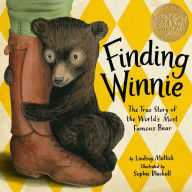
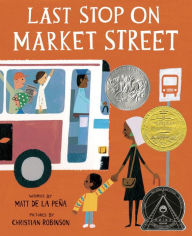
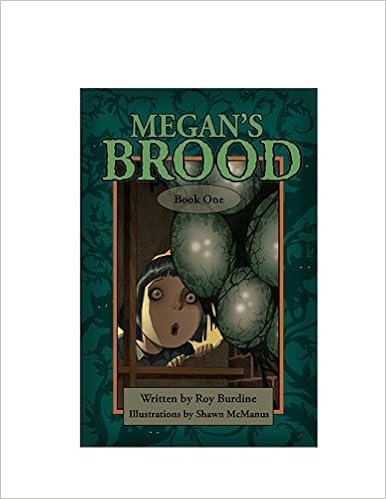


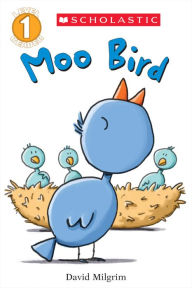
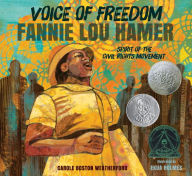
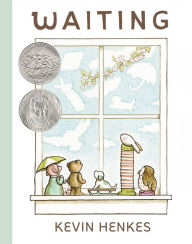
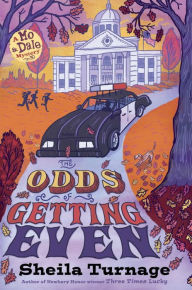


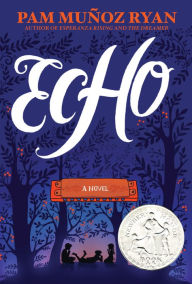
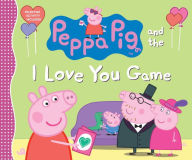





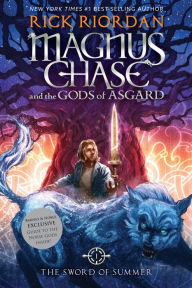



“entertaining”
Abhay is the greatest (anything) on the internet. He is my blog, my youtube, my porn. Long live and eviscerate, Abhay.
Nothing particularly insightful in Abhay’s screed, but at least he gave some ink to the spectacular awfulness of HU’s “Charlie Hebdo” essay.